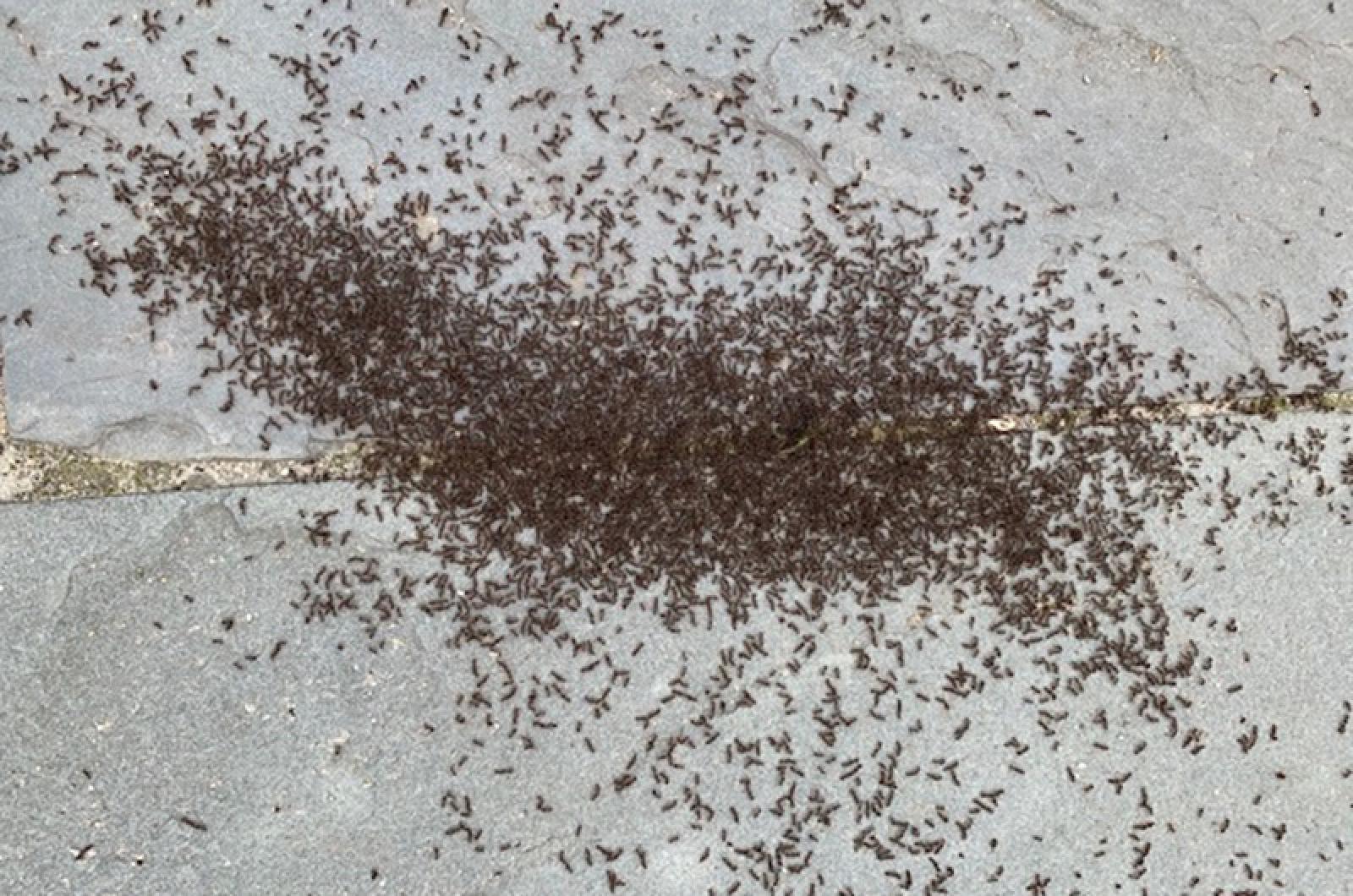It doesn’t take much to stir up an ant’s nest.
Without provocation, there they were, hundreds of little ants covering the stone patio. There was not only strength in numbers, but in weight too.
Consider the ant, small in size, but impressive in bulk. Laurent Keller and Elisabeth Gordon, authors of The Lives of Ants, explained the immense mass of the species: “Ants don’t just outnumber us, they come close to outweighing us too. Tiny as they are, ten million billions of them, at an average weight of three milligrams per ant, add up to a fair weight. It actually amounts to about 10 per cent of the animal biomass, that is one-tenth of the total weight of all animals on the face of the Earth.”
While my ants were a miniscule piece of the total ant biomass on the earth, they still were imposing in their domination and coverage of the granite stone.
These ants are pavement ants, a species that is known for its local appearance in large numbers, often on and around human-built hardscapes such as sidewalks, driveways, stone paths and built structures. A common urban and suburban dweller, pavement ants have taken advantage of the domestication of wild habitats.
Pavement ants were not always part of the American landscape and street scene. These ants colonized this country after being transported here in ships during the 1700s and 1800s. The ants didn’t march one by one (hurrah) up the gangway, they were stowaways — coming aboard in dirt used for ballast. Ships were loaded up with soil for stability in Europe, and the ballast was removed when they came to port to make space for the goods being shipped back.
After many generations the progeny of those early colonists led to the assemblage of ants I observed last week. The group was exhibiting swarm intelligence, the idea that individuals are not working for themselves but as a group with collective intelligence operating for the good of all.
In early spring ants may swarm for breeding purposes. Each colony contains one or more queens, fertile males and sterile worker females. The workers are wingless, only performing labor for the queen and colony. Males can have wings that they use to fly with the winged queen to mate. She can store sperm, so only needs one nuptial flight for life, and it is during this nuptial flight that swarming of males and queens can occur.
Another reason for the masses is for range expansion. After the laying of eggs and development of larvae, colonies can get too crowded. Swarms provide for an offshoot of a new colony to break away and find their own food when populations soar and resources become limited.
Another plausible reason to see hundreds of pavement ants above ground is warfare. These ants are hostile to invaders and will fight to the death over territory. That is why sometimes when the ants retreat, many dead ant bodies are left behind.
It is not surprising that Keller and Gordon filled a whole book with ant anecdotes and insect science, noting that “Since time immemorial, human beings have been fascinated, amazed, intrigued, and captivated by ants. And yet, at first glance, there is nothing particularly attractive about the tiny creatures. Unlike butterflies, they don’t have wings with vivid colour patterns; they cannot boast the iridescent wing-cases seen on many beetles. Nor do they produce things which human beings like to eat or wear, such as honey or silk.”
Mark Twain viewed them with a more cynical humor. He wrote: “It seems to me that in the matter of intellect the ant must be a strangely overrated bird. During many summers, now, I have watched him, when I ought to have been in better business, and...am persuaded that the average ant is a sham....He does not work, except when people are looking, and only then when the observer has a green, naturalistic look, and seems to be taking notes. This amounts to deception, and will injure him for the Sunday-schools.”
Suzan Bellincampi is director of the Felix Neck Wildlife Sanctuary in Edgartown, and author of Martha’s Vineyard: A Field Guide to Island Nature and The Nature of Martha’s Vineyard.




Comments
Comment policy »